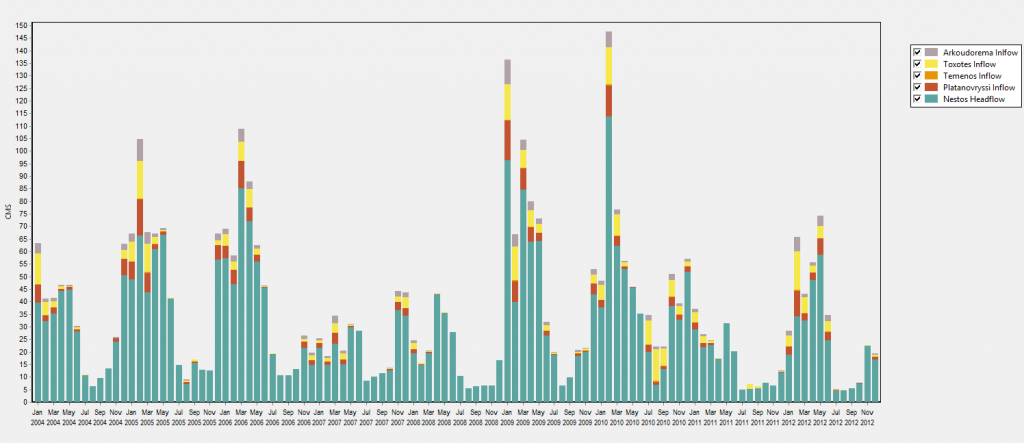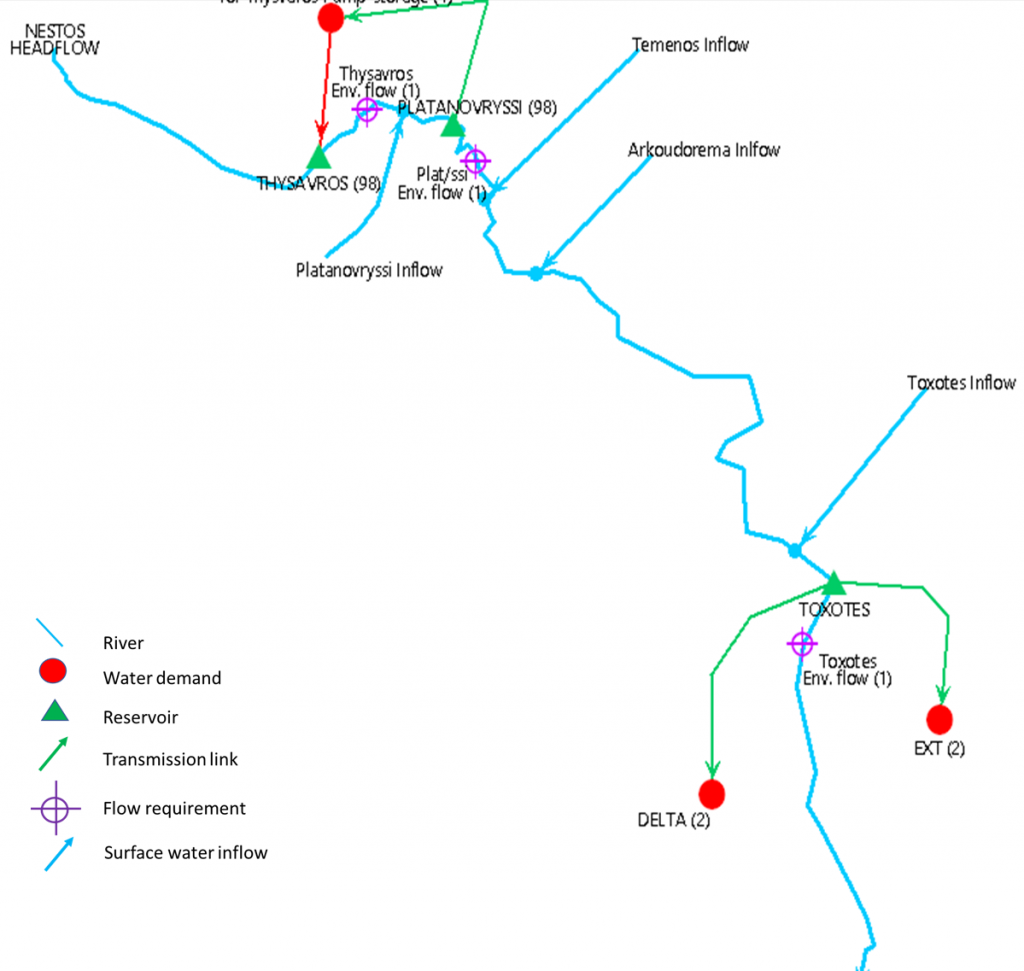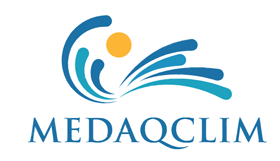Land Use Data (Nestos River Delta)
The Water Evaluation And Planning (WEAP) software system is a practical tool for water resources planning offering an integrated approach to water development, that could be applied to many regions worldwide that face formidable freshwater management challenges, such as allocation of limited water resources, environmental quality and policies for sustainable water use, especially where conventional supply-oriented simulation models are not always adequate (SEI, 2011).
The Stockholm Environment Institute provided primary support for the development of WEAP. The Hydrologic Engineering Center of the US Army Corps of Engineers funded significant enhancements. A few agencies, including the World Bank, USAID and the Global Infrastructure Fund of Japan have provided project support. WEAP has been applied in water assessments in dozens of countries, including the United States, Mexico, Brazil, Germany, Ghana, Burkina Faso, Kenya, South Africa, Mozambique, Egypt, Israel, Oman, Central Asia, Sri Lanka, India, Nepal, China, South Korea, Thailand, Jordan, Syria, Lebanon, Iran, and Greece.
WEAP represents a new generation of water planning software that utilizes the powerful capability of today’s personal computers to give water professionals everywhere access to appropriate tools. The design of WEAP is guided by several methodological considerations: an integrated and comprehensive planning framework; use of scenario analyses in understanding the effects of different development choices; Demand-management capability; Environmental assessment capability; and Ease of-use. WEAP places the evaluation of specific water problems in a comprehensive framework. The integration is over several dimensions: between demand and supply, between water quantity and quality, and between economic development objectives and environmental constraints.




